The Candy Bandits
They’re heartless and artful—delinquents of wit
With grab-happy claws and a glare that is lit
With greed that will trigger each dastardly deed—
These boisterous brutes are of barbarous breed.
Such ghastly marauders with mischief in mind
Are out and about with no doubt they will find
Fresh pleasures to pilfer at others’ expense.
Their hunger to plunder has conjured offense.
These gorgers have galled all the angels who place
Lush bonbons in baskets embellished with lace
For peachy-cheeked cherubs perturbed by the beasts
Who pee on the pumpkins and snaffle the feasts.
A princess and pirate are shrieking with grief
At spotting the slickest and stickiest thief—
Jaws gnawing and noshing the nectarous fare,
Fangs ripping at wrappers, farts rending the air.
They bully and sully each reveling street
With werewolves and zombies admitting defeat.
These utterly gluttonous, mannerless mobs
All hoggishly stuffing their slobbering gobs,
Now swallowing sparkle and vomiting glitter,
Have spewed up a moral that’s splattered on litter:
For trickster-free, trouble-free, tame Halloweens—
Swap platters of treats for tureens of green beans.
Star Crossed Cadavers
—a triolet
The luckless, lifeless Ghouliet
Is moaning for her Romeo.
As sunset dims to grimmest jet,
The fleshless, restless Ghouliet
Espies a bony silhouette—
Her long-lost, stone-cold, lonely beau.
The dead delighted Ghouliet
Is floating home with Romeo.
Susan Jarvis Bryant is a poet originally from the U.K., now living on the Gulf Coast of Texas.



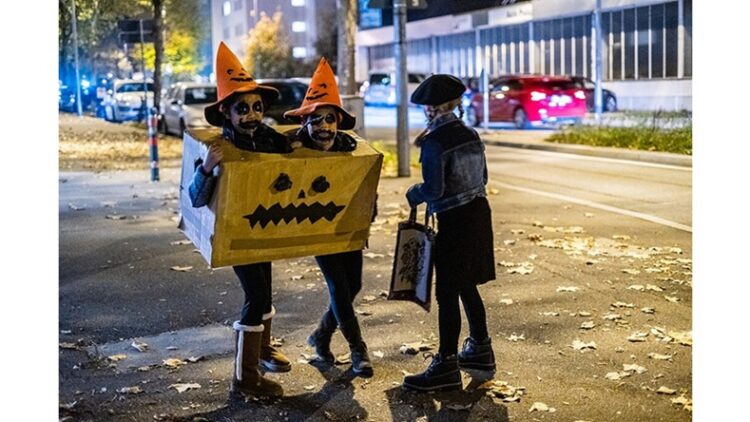



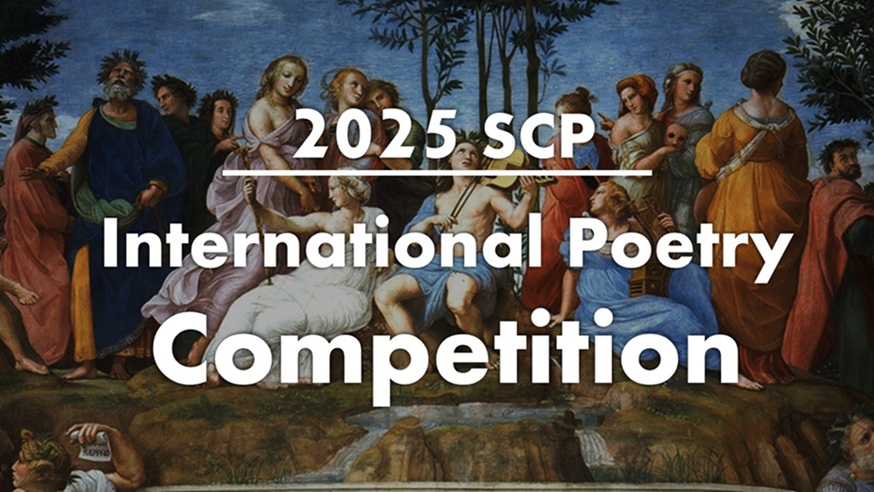

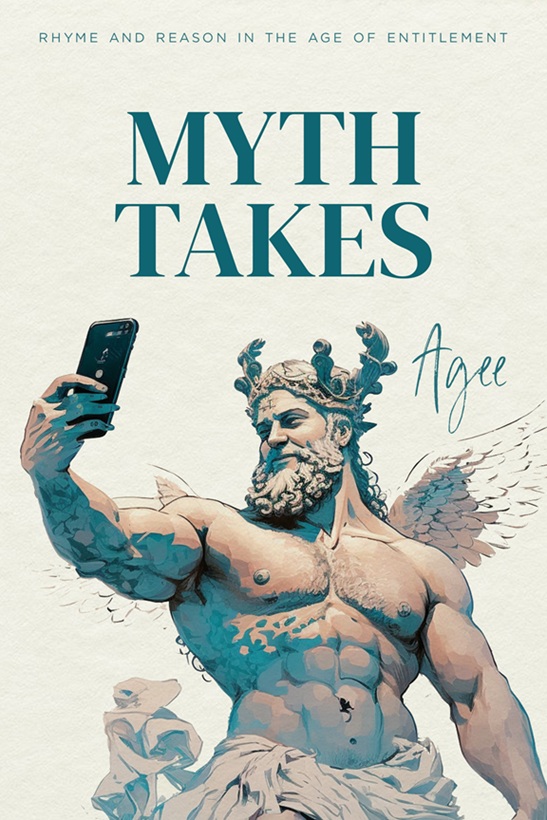
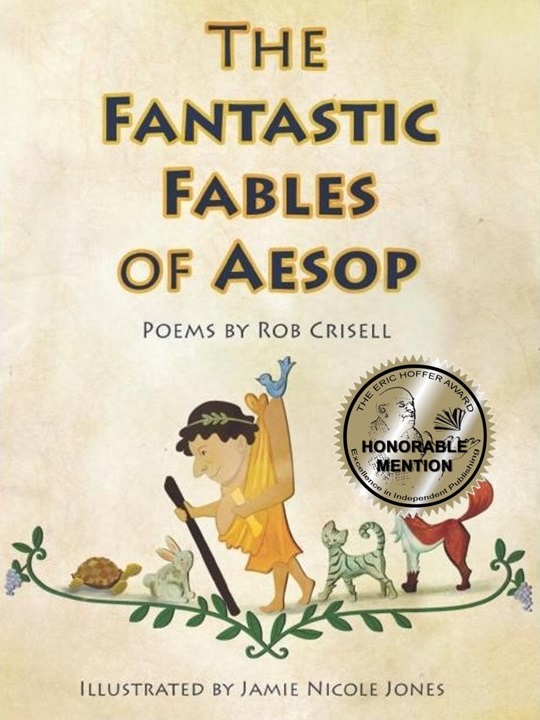
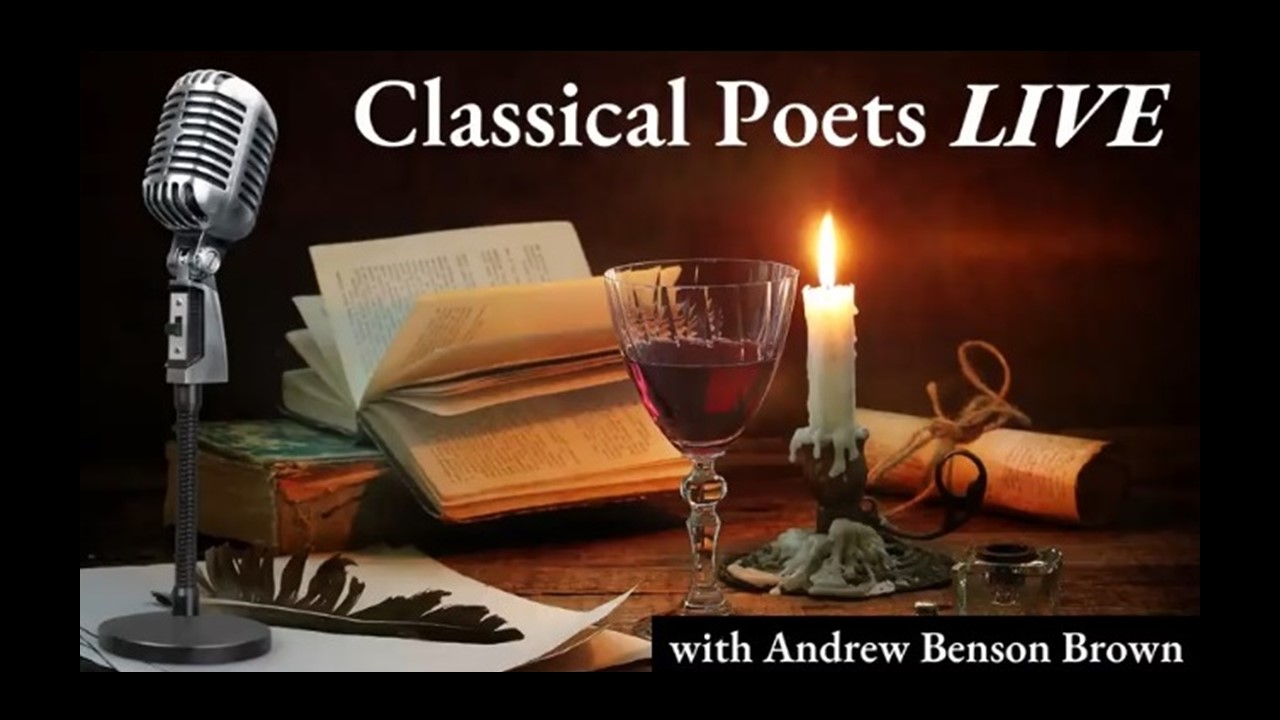






Susan, positively entertaining Halloween treats maligning the gift of the candies and sweets. You only could think of the treat of green beans for the “mannerless mobs” on their Halloweens. Your delightful poems are certain to please as the pranksters intend to “paper” our trees. “Star Crossed Cadavers” is ghastly and ghoulish as two long lost lovers at last get their wish! Happy Halloween to you and Mike. Thank you for the humor to brighten our night.
Roy, what a lovely comment and what a treat to have it presented in rhyme and rhythm. You have made me smile. Thank you!
They’re getting a sizeable selection of candy from us tonight, Susan, but some of it’s at least 2 years old. We should probably just turn out the porch light to be kind to the seemingly-greedier-every-year little twinks, but, as usual, some of their outfits are a real hoot! BTW – I can tell you’ve been working your alliterational skills – good girl! 🙂
Mark, thank you! I will admit to being a Halloween curmudgeon… I really don’t like Halloween at all. But like you, I appreciate the fun others have and I will admit to making some little bags of cookies without a hint of green beans in the mix. Shhh… don’t tell the candy bandits.
Boo! to you, too.
Ooh, C.B., you’ve caught me by surprise… I thought I’d made it through Halloween without a scare… I might need a potent pumpkin wine to settle my jitters.
“Star Crossed Cadavers” is a real hoot! The name “Ghouliet” is something that only a poetic mind could think up. I’m always glad to see the triolet used for a bit of impish, in-your-face satire. The metrical and rhyme structure is perfect (not a single glitch!) which in my view is essential for all very short forms.
“The Candy Bandits” shows that you are seriously pissed off at grabby and greedy trick-or-treaters. I don’t blame you. When I was a kid, no child over the age of eight would presume to go out demanding candy at the doors of strangers. As we got to the 1970s and 80s, more and more young adolescents joined in the shake-down, and it seemed to adults as a kind of blackmail or extortion. By the 1990s, Halloween had become a teenagers’ holiday, with all sorts of creepy additions and unpleasantries.
Both poems are a great pair for this spooky day.
Joe, I am thrilled you like these poems, especially the triolet. I love triolets. They can be a tad tricky in their brevity and repetition, but they are such fun, and this one had me smiling. I’m really not keen on Halloween. It started to take off in England in the 90s and has gone from big to bigger to bloody well huge. The horror movie craze of the 80s spilled over into the costumes, and some of them were seriously hair-raising. I opened the door one year and had to stifle a scream! I always have treats ready… but I NEVER enter into that Halloween spirit… although I will admit to wanting to try a bit of apple bobbing… with not a ghoul in sight.
Susan, there was even an earlier horror-movie craze in the 1960s. You Brits made some awful ones, like “Gorgo” and “Quatermass and the Pit” (released as “Five Million Years to Earth” in the U.S.). But one of the very best horror films was a U.K. production called “Night of the Demon” (released as “Curse of the Demon” in the U.S.). It starred Dana Andrews, Peggy Cummins, and Niall MacGinnis.
This film is frightening, but also a serious exploration of the conflict between skeptical scientific rationalism and the occult arts. The protagonist (Dana Andrews) is a hardheaded American debunker of frauds and impostures, who comes to England to expose what he calls the “fakery” of witchcraft and black magic. His antagonist (Niall MacGinnis) is a practicing warlock with a coven of devil-worshipers, who has real powers of controlling the weather, and summoning up demons to murder persons. Their interactions and conversations are a lively debate between secular, science-based reasoning from evidence, and the warlock’s incontrovertible and devastating power to wield evil preternatural weapons.
At the end of the film, we as the audience know very well that the warlock’s powers are upsettingly real. But Dana Andrews and his associates simply decide that they should retain their rationalist views, and simply not think or talk about the horrors that they have experienced.
Several British writers maintained a strong sense of witchcraft, preternatural powers, and occult knowledge. I’m especially thinking of H.H. Munro (pen name “Saki”), who wrote a number of stories set in the contemporary world, but utterly filled with occult and magical doings that had to be accepted as real.
What wonderful fun! I don’t know how you do it. The rollicking poem, “Candy Bandits,” reminds me of the sorts of things my friends and acquaintances and I did as kids! This year I had only small fry trick-or-treaters who each grabbed a handful of candy at my request. No tricks.
Thank you for your lovely comment, Jeff. A Halloween with no tricks is the best Halloween. I’m all for a trick or two… but they don’t mix with this devilish occasion… in my curmudgeonly opinion.
Susan, I’m completely baffled by the ease with which you appear to produce pieces like this. Successful humour is notoriously difficult to achieve, but these work a treat (so to speak).
I am so glad you enjoyed these poems, Martin. I will admit to laughing as I wrote them. I very rarely suffer for my art – it’s those around me who suffer. When I write time stands still for me… and only me. A whole morning will pass as if it’s a mere minute. This can be a problem for those who need my undivided attention.
thanks Susan – a little light in my November gloom.
Dave, it’s always lovely to get a comment from a writer of your calibre and to bring a little light to your gloom is the entire purpose of these poems. I hope you’re doing okay over there. I’m reading so many horror stories it’s as if Halloween has become a permanent feature.
Susan, I now believe in evolution. I was lucky enough to be along for the ride as your poem started out as a portrait of a marauding raccoon and then morphed into this haunting Halloween hilarity! How do you do it? Beautiful.
Thank you, biggest fan! And yes, the poem was inspired by those ring-doorbell videos on the internet of raccoons and other candy-hungry critters grabbing the Halloween treats from beautifully decorated porches. This poem serves to prove, not one minute of lounging and laughing was wasted!
Susan, these are both fancifully entertaining with just a little shudder and a stinging chill. How well you’ve captured the very (haunted) spirit of Halloween!
I do love The Candy Bandits, and I have a few thoughts about it. But first… it is Star Crossed Cadavers which is the most surprising and – dare I say? – ghoulish. It is a piece so original only you could have penned it. And I love it. But it is not only the cadaverous characters which are fascinating – it is the fact that you have resolved Romeo & Juliet’s tragedy in a strange but canonically satisfying way. Allow me a slight linguistic detour: I’m no expert on Italian so I had to look to see whether the “gh” in Ghouliet was pronounced as a hard “g” (yes) as opposed to a “J” sound. That would have aurally preserve the name “Juliet” but you would have lost the “ghoul” reference so it’s better this more spooky way. But Gouliet looks Italian and that is just one more layer to this short but very rich poem. One other thing – this poem is both scary and satisfying. But it’s also very funny in the way names like Svengoolie are funny. And one last observation which gives weight to your little poem: Shakespeare was no stranger to ghosts.
Back to Candy Bandits. It is quintessential Susan Jarvis Bryant with its dizzying array of rhymes alliteration and assonance. I know of no other poet who can do what you do and I am green with envy (but not for the green beans.) One line which stands out for me is “These boisterous brutes of barbours breed.” How effortlessly this reads across the page and rolls upon the tongue and yet how much precision detail-work went into the crafting of such a line. It is not simply an array of “B” sounds after all. The meaning is enhanced rather than sacrificed by the poetic device. And the playfulness is souped-up by the sound effects of the “R”s attached to the “B”s. Another standout for me is “Jaws gnawing and noshing the nectarous fare.” I love this line partly because I love the hilarious use of the Yiddish word “nosh” in an otherwise highly formal poem along with the aural alliteration sound of “gnawing” which is a sonic alliteration without being a visual one. But you do make these cheeky word-choices and contrasting high and low images all through the piece, with angels and cherubs counterbalanced by pirates and beasts, with your use of the high-sounding “conjuring” and similar slightly period-sounding sophisticated words (perturb, dastardly, delinquents, et al.) which are then linguistically mocked by the pee and the farts and the glitter vomit. You go from the sublime to the ridiculous and you make it work perfectly.
Ultimately, what makes your work so superb, Susan, is that elusive quality: taste. You go far beyond what words mean to how words work together to spin a tale or a spark a mood. What a fantastic lesson in how to write the kind of poetry one wants to return to again and again (rather than the kind that makes one yawn, grateful to move on to other things.) Great work, Susan! And since I missed Halloween, a happy Dia de los Muertos to you and to Mike.
Brian, it’s always a treat to receive a comment from you and I am thrilled you enjoyed my quirky humor this Halloween. I am particularly glad you enjoyed the triolet. I love this tricky little form, and I so enjoyed fitting as much as I could into so little space for a happy ending to an age-old tale… well, as happy as it can get for cadavers on Halloween. And what a good point you make on the choice of “Ghouliet” – I was going for the hard “g” – and now I am thinking seriously about dropping the aitch (my mother would be appalled) for that Verona feel. Great observation!
I’m thoroughly encouraged by your comment on Candy Bandits. I love the musicality of language, but never at the expense of meaning. I know I tread a fine line with my choices and always try to make sure the words combinations sing. I’m over the moon they worked for you, especially my “boisterous brutes” line. I had huge fun with that one. I had no idea “nosh” was a Yiddish word. It was a word I heard often growing up in the UK. British people love to gather for a nosh-up and a knees-up on celebratory occasions.
You had me laughing with the “sophisticated” list next to the pee, farts, and glitter vomit. My poems are barmier than I initially thought! LOL
Brian, thank you very much indeed for encouraging and entertaining me with your wonderful comments.
One thing about Susan’s meter in “The Candy Bandits” — she has beautiful dactylic lines, with anacrusis (a single unstressed syllable) at the start of each line. And Susan makes use of compound words (grab-happy, peachy-cheeked, trickster-free, trouble-free) to emphasize the dactylic force of the lines. Such compounds are typical of the Germanic languages, and I love when they are employed so well as this.
Joe, thank you for your fine eye and for your appreciation. It means a lot to me.
Thank you for the lovely poetic entertainment Susan. I thoroughly enjoyed reading your poems for their unique style and polish, and additionally they make me appreciate the fact that I live in a Halloween-free zone even more than usual.
Yael, it’s always lovely to hear from you, and I am especially pleased when you enjoy my poetry. As a Halloween curmudgeon, I am with you on the Halloween-free zone front. I didn’t unveil tureens of green beans this year – but next year those ghosties and ghoulies may well be howling louder than usual.
These were both excellent (as expected). The Candy Bandits reminded me of why we now turn our lights off and hide in the back bedroom each Halloween. We hadn’t considered putting out green beans, but I fear how the mannerless mobs would respond.
Warren, I’m glad you enjoyed the poems, and I thank you wholeheartedly for your superb back-bedroom Halloween-hideaway idea. Next year I’m going to toss a few green beans and boiled sprouts on the porch, hurl my quaking self under the bed with hubby where there’ll be a bottle of joy-juice and some chocolate truffles (medicinal, of course) stashed away for a ghoul-induced emergency.
Ghouliet! Ha ha ha – brilliant!
James, your laughter was what I was after… you have made me smile! Thank you!
Such hilarious use of hyperbole!
Terry, thank you! My Muse insists upon a bit of hyperbole on Halloween… and all year round. I have a hard job reining her in.